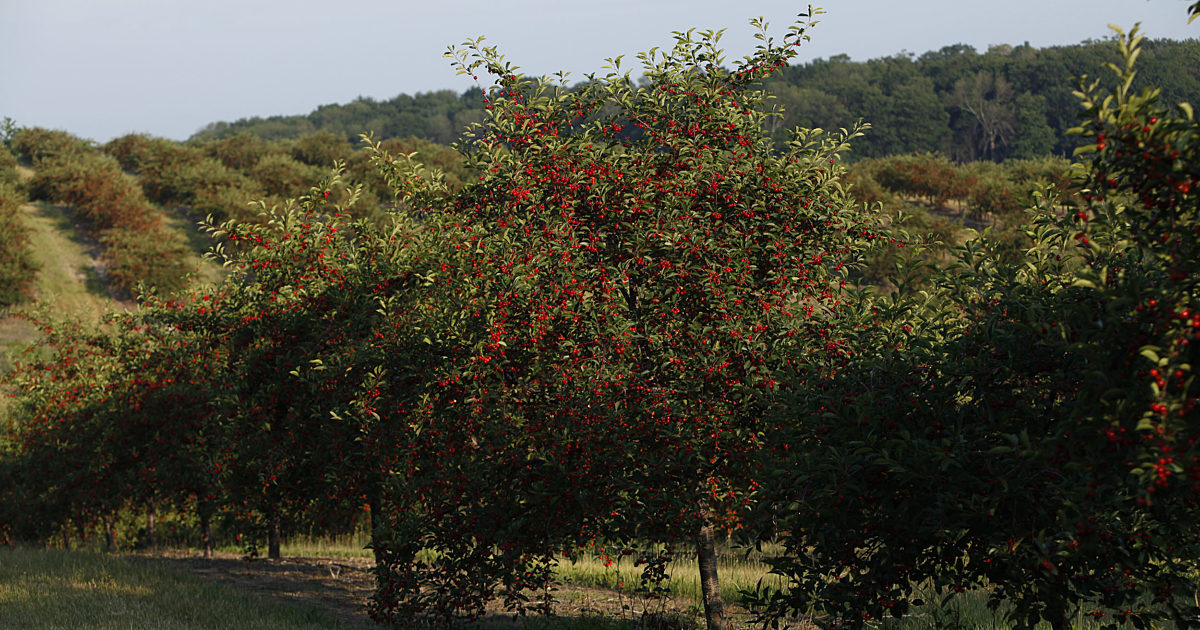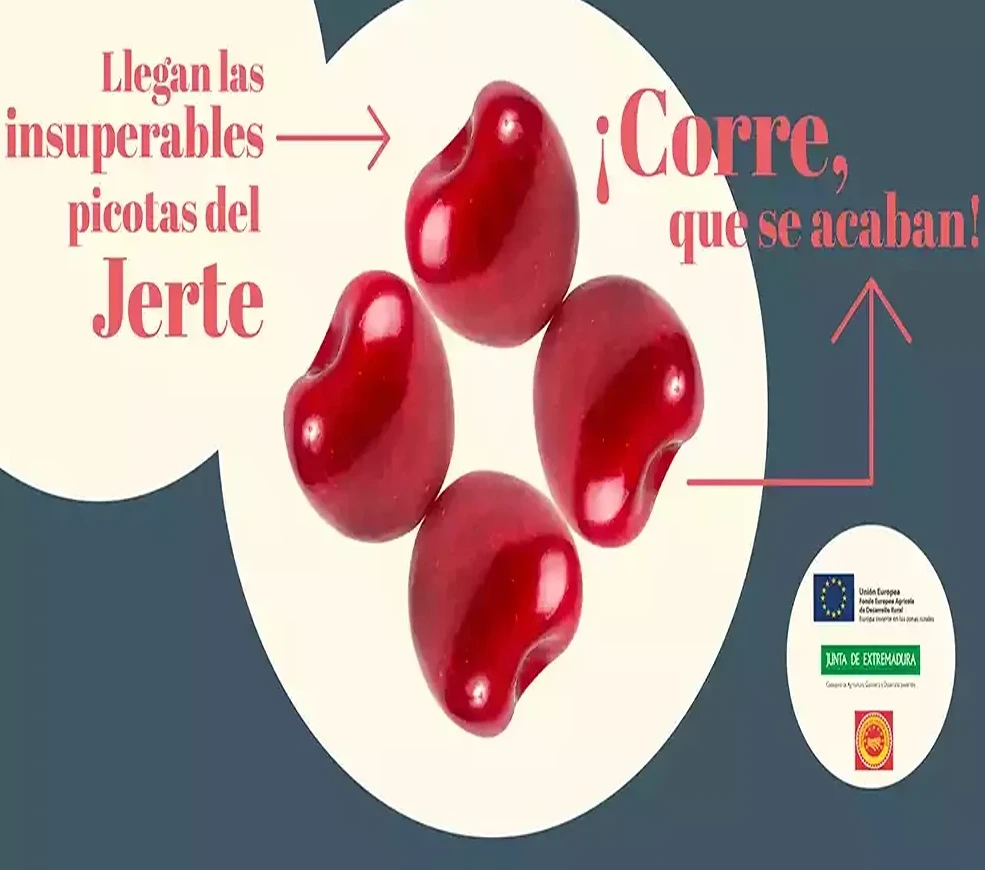The story of the Shoreline Fruit cooperative begins in the late 1960s, during the casual meetings of the FarmHouse Fraternity at Michigan State University. It was here that two pairs of brothers, Bob and Don Gregory and Dean, Gene, and Norm Veliquette, planted the seeds of what would become the largest cherry company in North America.
A few rented acres grew into a vast growers' cooperative; today, the cooperative's 6,000 acres of orchards in Williamsburg typically harvest about 50 million pounds (over 22,000 tons) of Montmorency tart cherries. The Gregory family manages Cherry Bay Orchards and Gregory Brothers Farms, while the Veliquette family businesses are Cherry Ke and Cherries R Us.
Among the first in northern Michigan to achieve USDA Good Agricultural Practices certification, Shoreline Fruit growers also set a high standard for sustainable farming. "I love working with my family and being responsible for something that has a long history. It's very rewarding to work with the land, steward it, and pass it on to the next generation," says Nels Veliquette, CFO of Cherries R Us.
But the cultivation process is not always sweet, even here in the cherry capital of the world. International competition, labor shortages, and climate change keep growers on their toes. On the positive side, new collaborations and technology, including TikTok, can help offset the challenges growers face.
 Image 1: Shoreline Fruit tart cherry orchard.
Image 1: Shoreline Fruit tart cherry orchard.
Supply and Demand
In the early 1990s, the cherry industry faced significant economic challenges. Prices for growers were around just five cents per pound, an unsustainable figure for long-term profitability.
In response, the industry established a Federal Marketing Order (FMO), which allowed some producers to work together to manage supply, stabilize prices, and pool resources for marketing activities. This initiative, overseen by a committee of growers and processors, aimed to create a more sustainable and profitable market for tart cherries.
The dual approach of supply control and OCM marketing has helped stabilize prices and promote cherry consumption in the United States. "The Federal Marketing Order, the OCM, works very well," says Nels.
A unique aspect of tart cherry production under the FMO is the ability to control supply. This has led to dramatic scenes where excess cherries are sometimes dumped on the roadside, a practice that has drawn public attention. However, as Nels clarifies, "The government has never, ever, and cannot force anyone to dump cherries."
The decision to manage excess cherries, whether to dump them or put them in reserve, is made collectively by growers and processors. Reserves can be used in case of crop failure or to support the development of new products.
While the OCM's supply control aspect is in the spotlight, its marketing efforts funded by the OCM have proven equally vital. Over the past 30 years, these marketing initiatives have successfully increased cherry consumption.
"Americans eat more cherries and consume more cherries than ever," says Nels, attributing this success to the effective use of marketing funds raised through a small grower levy.
However, the cherry industry still faces the challenges of international competition. In the early 2000s, a significant crop loss led to an influx of cherries from Poland and Turkey to meet market demand. This shift highlighted a critical vulnerability in the U.S. cherry market: the lack of import restrictions.
"Imports came in to fill a niche," says Nels, but explains that over time importers realized they could profit from the U.S. market, especially since production costs in countries like Turkey are lower due to government subsidies.
Foreign competitors may never disappear, so Nels believes that integrating international producers into the OCM's marketing efforts could change the game. "If we could get everyone, including importers, to participate in the marketing assessment, our budget would increase significantly, and all producers would benefit," he suggests.
 Image 2.
Image 2.
Fighting on Multiple Fronts
Managing pests and diseases is another constant battle for cherry growers. The spotted wing drosophila (SWD), a fruit fly from Asia, poses a significant threat.
"Milder winters have increased the pressure of pests and fungi," says Nels. "Our climate is getting milder, and there's not as much snow, which impacts our crops." These changes have made it essential for Shoreline Fruit to adopt stronger pest management strategies.
Climate variability, such as late spring frosts, scorching early summer weeks, and heavy rains, has led to more frequent crop failures. Recently, in 2020 and 2021, many farms in the area lost up to 90% of their crops.
"There's no doubt our weather is more unpredictable, and short crops are more frequent," says Nels. "It's a constant challenge to adapt to these changes."
The labor shortage has also significantly impacted the cherry industry. The H-2A temporary visa program for agricultural workers from Mexico has been a lifeline, allowing orchards to operate efficiently during harvest season.
"We run six crews, harvesting 24/7," says Nels. "The last local crew we had was in 2019. It's impossible to hire enough local labor, and finding housing for our workers is a constant challenge."
Then there's the shifting target of the fruit itself. While tart cherries are Shoreline Fruit's bread and butter, the farms produce a variety of cherries, including tart cherries for pies and dried products, blush cherries for maraschinos, and dark sweet cherries for fresh consumption and yogurt production.
"We've had to adapt to changing consumer preferences and market demands," Nels explains. Significant changes have been made to the types of cherries grown and the methods used to ensure their competitiveness over the last 10-20 years.
Read the full article: Northern Express
Image: Shoreline Fruit
Cherry Times - All rights reserved












